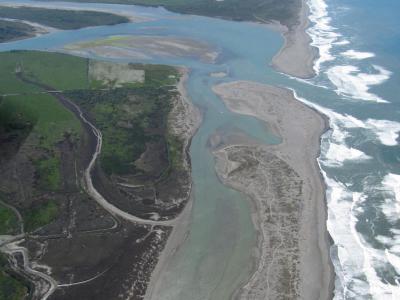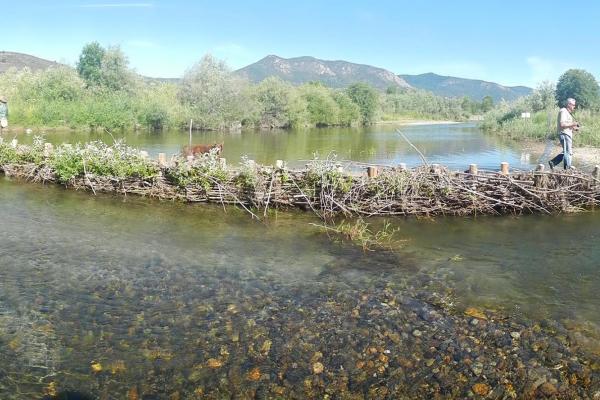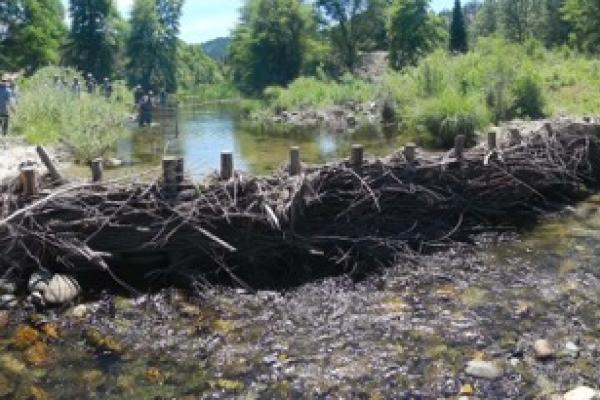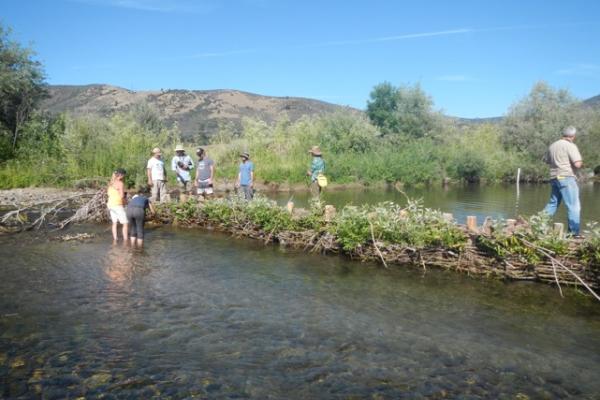Evolving Science and Policy to Restore Streams Using Instream Obstructions and Beaver Dam Analogues
Workshop Coordinator:
Eli Asarian, Riverbend Sciences
Instream structures such as beaver dams, wood jams, living vegetation, and other obstacles that slow the downstream movement of water and sediment are essential to the restoration of streams. These obstructions can be used to accelerate the development of "stage zero" channels (Cluer and Thorne 2013) which are increasingly recognized as having intrinsic high value because of the multiple and synergistic ecosystem goods and services that such systems provide. Stage zero channels have well connected floodplains with elevated water tables, spatially variable hydrologic regimes and structurally complex aquatic and riparian habitat. As such, they provide incredibly valuable habitat for a suite of terrestrial and aquatic taxa, including several Pacific salmon species that are in decline.
This workshop will provide a state-of-the science overview of recent innovations in the construction of instream obstructions in California and their use in stream restoration, particularly for building stage zero fluvial ecosystems. Following the presentations there will be in-depth group discussions about how restorationists and permitting agencies can move forward together to improve the process for permitting innovative and adaptive restoration projects in California.
Streams evolve and habitat and ecosystem benefits accrue
Brian Cluer, Ph.D. NOAA Fisheries
Using Ecologically Functional Dams and other Instream Obstructions to Restore Complex Fluvial Ecosystems
Michael Pollock, Ph.D. NOAA Fisheries
Post Assisted Woody Structures: Implementing California’s First Beaver Dam Analogues
Betsy Stapleton, Scott River Watershed Council
A Demonstration of the Carbon Sequestration and Biodiversity Benefits of Beaver and Beaver Dam Analogue Restoration Techniques in Childs Meadow, Tehama County CA
Sarah Yarnell, UC Davis
Fish Passage at Natural and Constructed Channel Spanning Obstructions: Preliminary Observations from Klamath Basin Tributaries
Rocco Fiori, Fiori Geosciences
Beaver Restoration in the Sierra Nevada: U.S. Fish and Wildlife Service Applications
Damion Ciotti, U.S. Fish and Wildlife Service
The Beaver Restoration Guidebook: Are Beavers Too Good to be True for Stream Restoration?
Gregory Lewallen, Portland State University
How to Streamline Permitting of Restoration Projects that Makes Streams less Streamlined
Gordon Leppig, California Department of Fish and Wildlife
Regulatory Challenges to Restoring Complex Fluvial Ecosystems in California
Michael Pollock, Ph.D., NOAA Fisheries
Panel Discussion on Improving the Restoration Permitting Process, all presenters







